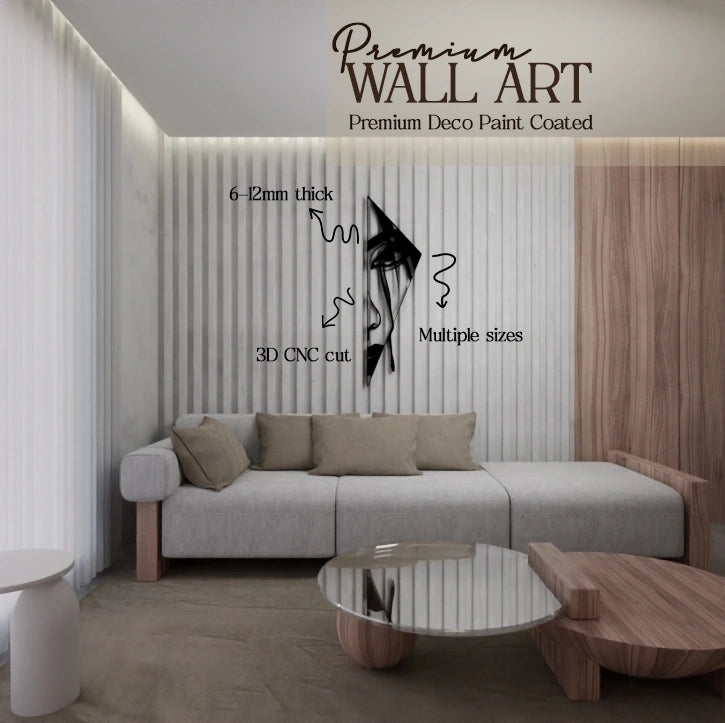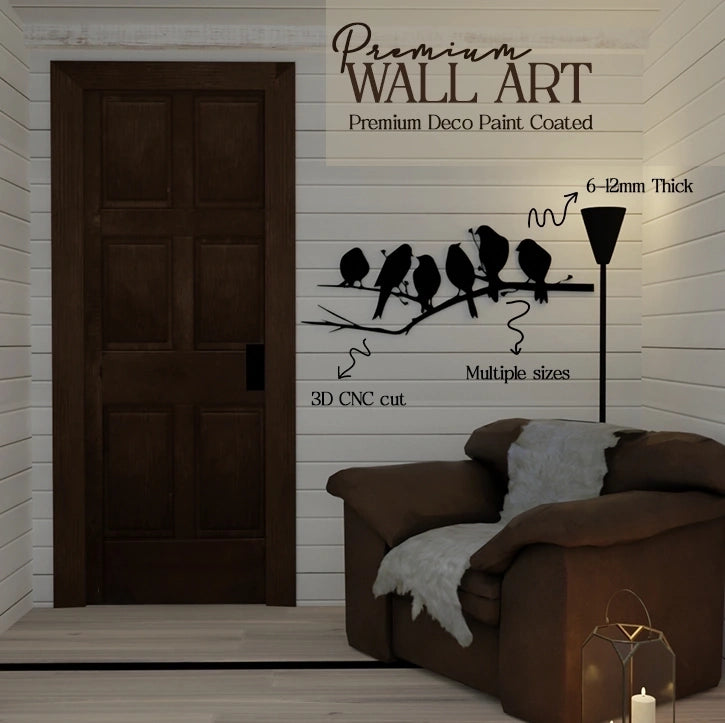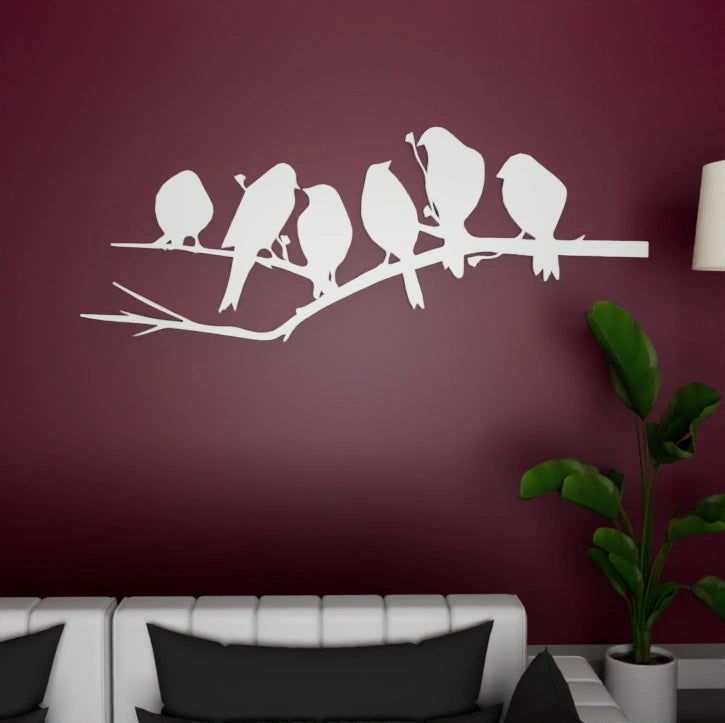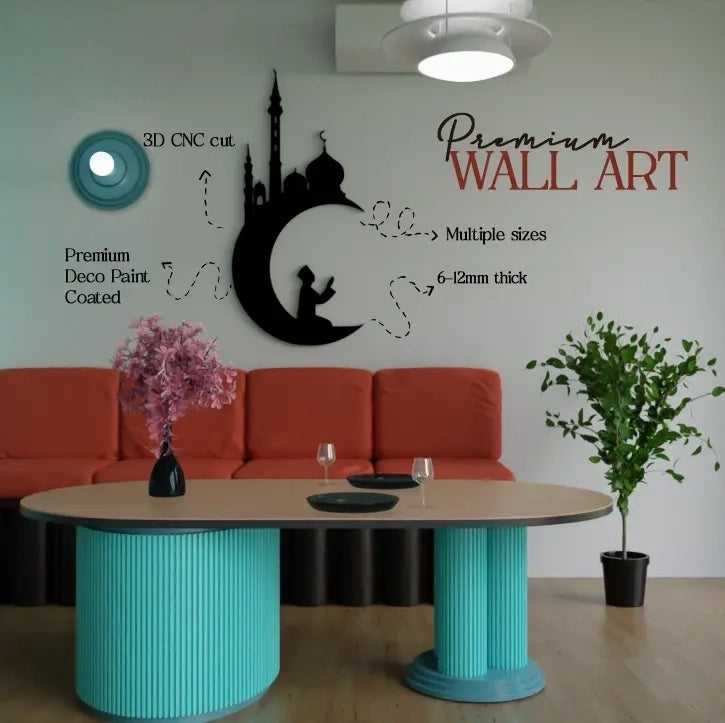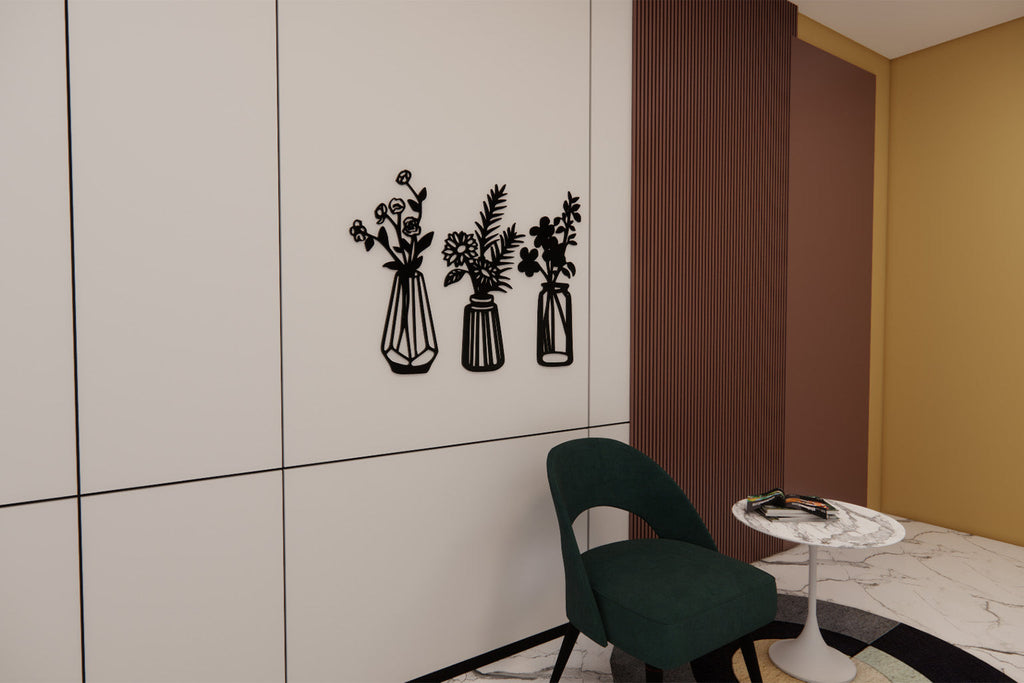
The Intricate Beauty of 3D Laser Cut Art: A Modern Masterpiece in Precision and Detail

The fusion of technology and art has birthed a breathtaking new medium known as 3D laser cut art. This modern masterpiece in precision and detail seamlessly marries the intricate craftsmanship of traditional art with the technological advancements of the 21st century. By utilizing laser cutting technology, artists are able to create stunningly intricate designs that come to life in three dimensions, pushing the boundaries of what is possible in the realm of artistic expression.
3D laser cut art showcases the unparalleled precision and detail that can be achieved through the marriage of artistry and technology. Each piece is meticulously crafted, with the laser cutting process allowing for the creation of incredibly intricate designs that would be nearly impossible to achieve by hand. The result is artwork that dazzles the eye with its complexity and depth, inviting viewers to marvel at the skill and creativity that has gone into its creation. In this article, we will explore the beauty and intricacy of 3D laser cut art, delving into the techniques used to create these modern masterpieces and the ways in which they are pushing the boundaries of traditional artistic expression.
Advancements in Laser Cutting Technology
In recent years, the world of art and design has been revolutionized by the advancements in laser cutting technology. This innovative technique has opened up a whole new world of possibilities for artists and designers, allowing them to create intricate and detailed pieces with unparalleled precision.
One of the key advantages of laser cutting technology is its ability to cut through a wide range of materials with extreme accuracy. Whether it be wood, acrylic, paper, fabric, or even metal, laser cutting machines are capable of producing clean, sharp cuts that are impossible to achieve with traditional tools. This level of precision allows artists to create incredibly detailed pieces that would have been extremely difficult, if not impossible, to produce by hand.
Furthermore, laser cutting technology offers artists the ability to experiment with new and innovative techniques. By utilizing computer-aided design (CAD) software, artists can create intricate designs and patterns that can be cut with pinpoint accuracy by the laser. This level of control allows artists to push the boundaries of what is possible, creating pieces that are truly one-of-a-kind.
Another key advancement in laser cutting technology is the introduction of 3D capabilities. With the ability to cut and engrave multiple layers of material, artists are able to create multi-dimensional pieces that truly come to life. This added dimensionality adds a new level of depth and complexity to the art, making it even more captivating and engaging for viewers.
Additionally, the speed and efficiency of laser cutting technology has drastically improved in recent years. Artists can now produce pieces in a fraction of the time it would take using traditional methods, allowing them to create more pieces and explore new ideas at a faster pace. This increased efficiency also means that artists can take on more projects and meet tight deadlines without sacrificing quality.
One of the most exciting developments in laser cutting technology is the integration of robotics and automation. By combining laser cutting machines with robotic arms, artists are able to create larger, more complex pieces with ease. This level of automation also allows for greater consistency in the finished product, ensuring that each piece is exactly as the artist intended.
Overall, the advancements in laser cutting technology have revolutionized the world of art and design, allowing artists to create intricate and detailed pieces with unparalleled precision and efficiency. With the ability to cut through a wide range of materials, experiment with new techniques, and create multi-dimensional pieces, artists are now able to push the boundaries of what is possible and create modern masterpieces that are truly awe-inspiring. As technology continues to evolve, the possibilities for laser cut art are truly endless, and we can only imagine what the future holds for this exciting medium.
Detailed Process of Creating 3D Laser Cut Art
Creating 3D laser cut art is a meticulous and intricate process that requires patience, precision, and attention to detail. The first step in creating a piece of 3D laser cut art is conceptualizing the design. This involves sketching out ideas, experimenting with shapes and patterns, and visualizing how the final piece will look.
Once the design has been finalized, the next step is to transfer it to a computer-aided design (CAD) software program. This software allows the artist to convert the 2-dimensional design into a 3-dimensional model that can be manipulated and edited to ensure accuracy and precision.
After the 3D model has been created, it is then sent to the laser cutting machine. The machine uses a high-powered laser to cut through a variety of materials, such as wood, acrylic, or metal, with extreme precision. The artist must carefully select the appropriate material for the design, taking into account factors such as thickness, durability, and aesthetic appeal.
As the laser cuts through the material, it follows the intricate paths and shapes outlined in the 3D model. The speed and power of the laser can be adjusted to create different effects, such as sharp edges, smooth curves, or intricate patterns. The artist must monitor the cutting process closely to ensure that each detail is being executed correctly.
Once the cutting is complete, the artist must carefully remove the cut pieces from the material. This often requires delicate handling and precision to avoid damaging the fragile shapes and intricate details. Any rough edges or imperfections must be sanded or polished to achieve a smooth and flawless finish.
After all the pieces have been cut and refined, the final step is to assemble them into the finished artwork. This involves fitting the pieces together like a puzzle, ensuring that each component aligns perfectly with the others. Some pieces may be glued or fastened together, while others may be left to interlock or stand on their own.
Throughout the entire process, the artist must pay close attention to detail, ensuring that each cut, edge, and connection is precise and flawless. Even the smallest imperfection can detract from the overall beauty and impact of the artwork.
In conclusion, creating 3D laser cut art is a highly technical and meticulous process that requires skill, patience, and a keen eye for detail. From conceptualizing the design to cutting the material to assembling the final piece, every step must be executed with precision and care. The end result is a modern masterpiece that showcases the intricate beauty of laser cutting technology and the creative vision of the artist.
Benefits of Using 3D Laser Cutting for Art
3D laser cutting has revolutionized the world of art by offering artists a precise and efficient way to create intricate designs and sculptures. This cutting-edge technology utilizes high-powered lasers to cut through various materials with incredible precision and detail, allowing artists to bring their visions to life with stunning accuracy and complexity. There are numerous benefits to using 3D laser cutting for art, making it a popular choice for artists looking to push the boundaries of creativity and craftsmanship.
One of the key advantages of 3D laser cutting is its unmatched precision. Unlike traditional cutting methods, which can be prone to human error and limitations, 3D laser cutting offers artists a level of accuracy that is virtually unmatched. The high-powered lasers can cut through materials with incredible precision, allowing artists to create intricate designs and delicate details with ease. This precision is essential for artists who value exactitude and attention to detail in their work, as it ensures that every cut is made with the utmost accuracy and consistency.
Another benefit of using 3D laser cutting for art is its versatility. These cutting machines can work with a wide range of materials, including wood, plastic, metal, and more, giving artists the flexibility to explore different mediums and textures in their work. This versatility allows artists to experiment with new materials and techniques, pushing the boundaries of what is possible in art and design. Whether creating intricate sculptures, unique patterns, or decorative accents, 3D laser cutting offers artists endless possibilities for creative expression.
In addition to precision and versatility, 3D laser cutting also offers artists unparalleled speed and efficiency in their work. These cutting machines can produce complex designs in a fraction of the time it would take using traditional methods, allowing artists to create more work in less time. This increased efficiency is especially beneficial for artists working on tight deadlines or large-scale projects, as it allows them to produce high-quality pieces quickly and efficiently. By streamlining the cutting process, 3D laser cutting enables artists to focus more on the creative aspects of their work, resulting in faster turnaround times and greater productivity.
Furthermore, 3D laser cutting is incredibly cost-effective compared to other cutting methods. While the initial investment in a 3D laser cutting machine may be significant, the long-term savings in material costs, labor, and maintenance make it a sound investment for artists looking to maximize their resources. Additionally, the precision and efficiency of 3D laser cutting can reduce waste and minimize errors, further saving artists time and money in the creation process. By optimizing their production methods with 3D laser cutting, artists can create high-quality work at a fraction of the cost of traditional methods, making it a cost-effective solution for artists of all levels.
Overall, the benefits of using 3D laser cutting for art are clear: precision, versatility, speed, efficiency, and cost-effectiveness. By harnessing the power of this cutting-edge technology, artists can push the boundaries of their creativity and craftsmanship, creating intricate designs and sculptures that are truly masterpieces of modern art. If you are an artist looking to elevate your work to new heights, consider incorporating 3D laser cutting into your practice and unlock the endless possibilities it has to offer.
Exploring Different Types of Materials Used in 3D Laser Cut Art
In the world of 3D laser cut art, the range of materials used is vast and diverse, each offering its own unique characteristics and possibilities. From delicate paper creations to sturdy metal sculptures, artists around the globe are pushing the boundaries of what can be achieved with this innovative technology. Let us delve into some of the most commonly used materials in 3D laser cut art and explore the intricate beauty each one brings to the table.
One of the most popular materials in 3D laser cut art is wood. Wood offers a warm, natural aesthetic that is unmatched by any other material. Artists often choose different types of wood, such as birch, maple, or cherry, each with its own grain pattern and texture. The laser cutting process allows for intricate designs to be etched into the wood, creating stunning patterns and sculptures that capture the eye and the imagination. Wood is also a versatile material that can be stained, painted, or left in its natural state, providing endless possibilities for creativity.
Another material commonly used in 3D laser cut art is acrylic. Acrylic is a durable, transparent material that comes in a wide range of colors and finishes. Its versatility makes it a favorite among artists looking to add a modern, sleek look to their creations. Acrylic can be laser cut into intricate shapes and designs, allowing for the creation of stunning sculptures, jewelry, and home decor pieces. Its smooth surface and reflective properties make it a captivating material that can play with light and shadow in fascinating ways.
Metal is another popular choice for artists working in 3D laser cut art. Metals such as steel, aluminum, and brass offer a unique industrial aesthetic that can bring a touch of modernity and sophistication to any artwork. Metal sculptures created through laser cutting techniques are often bold and striking, with intricate details that showcase the precision of the technology. Metal can also be combined with other materials, such as wood or acrylic, to create mixed-media pieces that blend different textures and colors seamlessly.
Paper may seem like a delicate material, but it is also widely used in 3D laser cut art for its versatility and intricacy. Artists can create stunning paper sculptures, pop-up cards, and installations using laser cutting techniques to produce intricate patterns and designs. Paper offers a lightweight and budget-friendly option for artists looking to experiment with different shapes and textures. From delicate lace-like patterns to bold geometric designs, paper can be transformed into works of art that captivate and inspire.
In addition to the materials mentioned above, artists working in 3D laser cut art also explore unconventional materials such as fabric, leather, and even food. Each material offers its own unique challenges and possibilities, pushing artists to experiment and innovate in their quest to create breathtaking works of art.
The world of 3D laser cut art is a vibrant and dynamic one, constantly evolving as artists push the boundaries of what can be achieved with this cutting-edge technology. By exploring the different materials available, artists can discover new ways to express their creativity and showcase the intricate beauty of laser cut art in all its forms.
Showcasing Impressive Examples of 3D Laser Cut Artworks
In the world of art, 3D laser cut artworks have emerged as a groundbreaking and innovative medium that combines precision engineering with artistic expression. This modern technique utilizes advanced technology to create intricate designs with unparalleled detail and complexity. The result is a mesmerizing display of craftsmanship that captivates viewers with its beauty and precision.
One of the most impressive examples of 3D laser cut art is the work of renowned artist, Known for his intricate and detailed creations, [Artist Name] pushes the boundaries of what is possible with this medium. His sculptures and installations are a testament to the precision and skill required to create such breathtaking pieces.
One of his most notable works, a stunning sculpture that evokes a sense of movement and fluidity. The intricate details of the piece are brought to life with the use of light and shadow, creating a dynamic and visually captivating experience for viewers. Each curve and line is meticulously crafted to perfection, showcasing the artist's mastery of the medium.
Another impressive example of 3D laser cut art is the work. His geometric designs and patterns are a striking exploration of shape and form. Using a combination of straight lines and curves, creates mesmerizing artworks that challenge the viewer's perception of space and dimension. By playing with light and shadow, he brings depth and complexity to his pieces, making them truly unique and captivating.
In addition to individual artists, there are also collective groups that specialize in 3D laser cut art. One such group, a collective of artists who are dedicated to pushing the boundaries of this medium. Their collaborative works are a celebration of creativity and innovation, showcasing the limitless possibilities of 3D laser cut art.
One of their most notable projects is [Project Name], a collaborative installation that defies traditional notions of art and design. By combining their unique perspectives and talents, the members of [Art Group Name] have created a truly immersive and interactive experience that invites viewers to engage with the artwork on multiple levels.
In conclusion, the intricate beauty of 3D laser cut art is a modern masterpiece in precision and detail. From individual artists to collective groups, the world of 3D laser cut art is a vibrant and dynamic space that continues to evolve and inspire. Through their innovative use of technology and artistic vision, these creators are redefining what is possible with this medium, pushing the boundaries of artistry and craftsmanship. By showcasing impressive examples of 3D laser cut artworks, we can appreciate the skill, creativity, and dedication that goes into creating these breathtaking masterpieces.
Conclusion:
3D laser cut art stands as a testament to the unparalleled precision and detail that can be achieved through modern technology. The intricate beauty of these masterpieces showcases the skill and innovation of artists who push the boundaries of creativity. As this art form continues to evolve and inspire, it is clear that 3D laser cut art is a modern masterpiece that will continue to captivate audiences for years to come.


